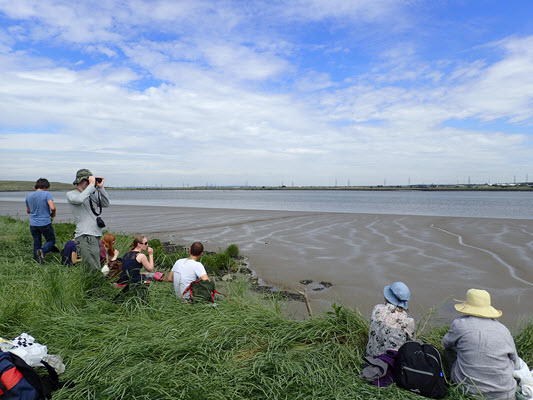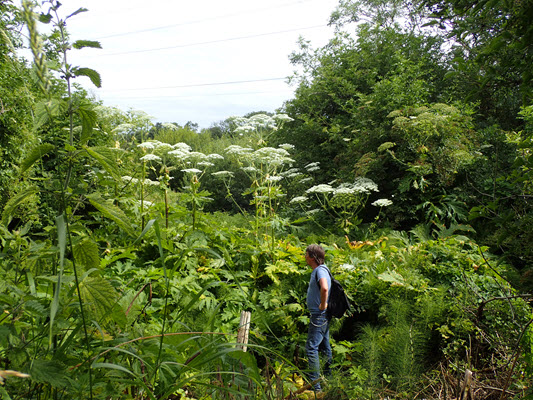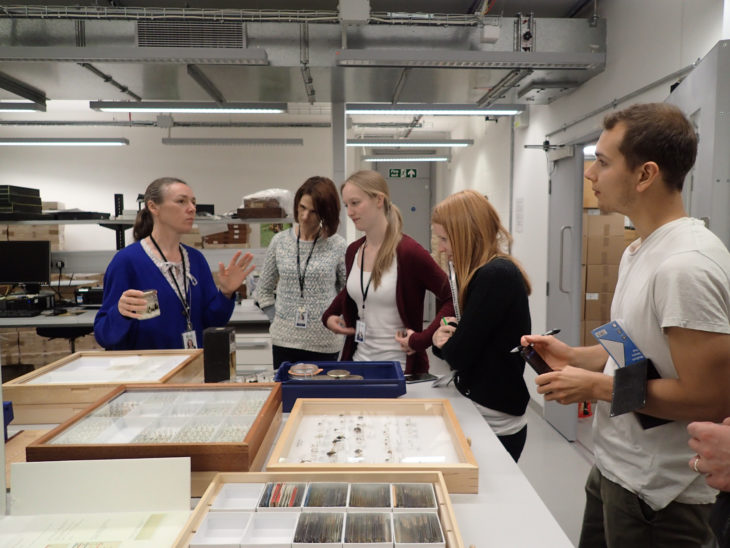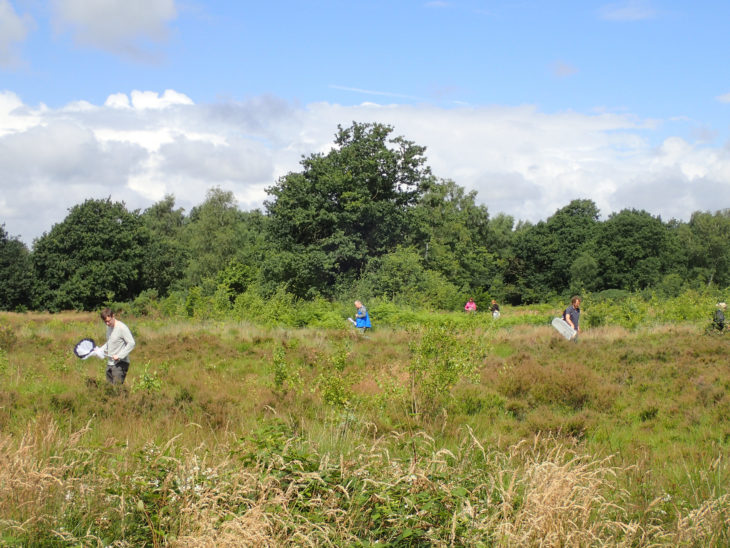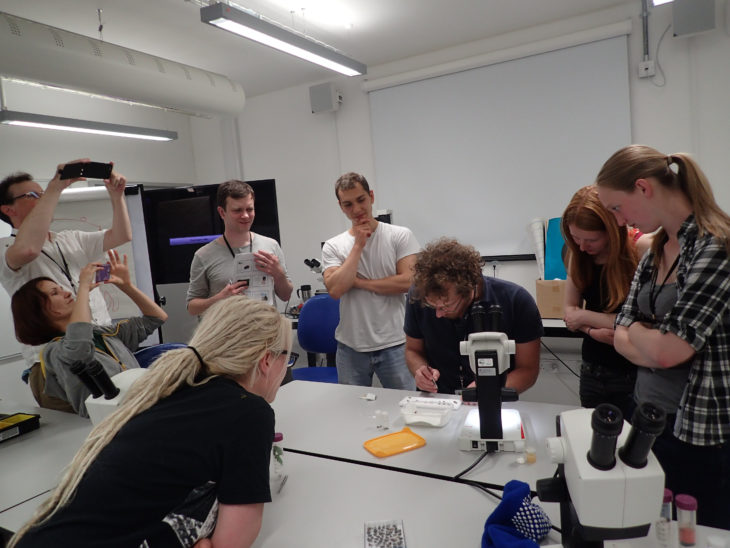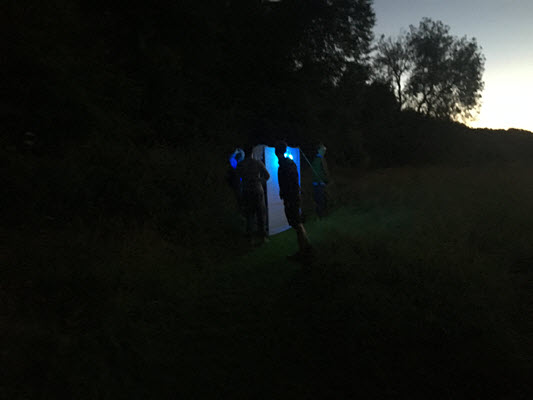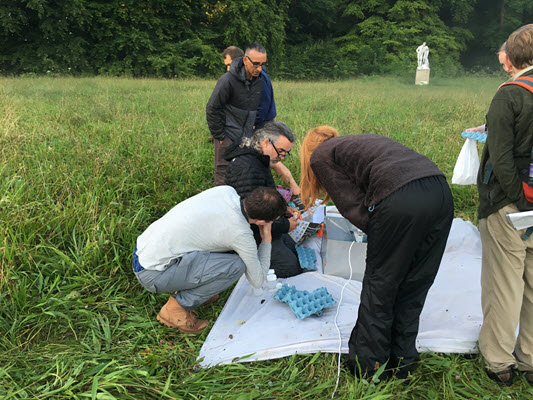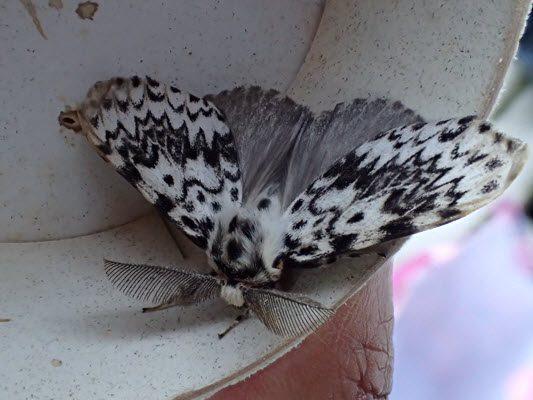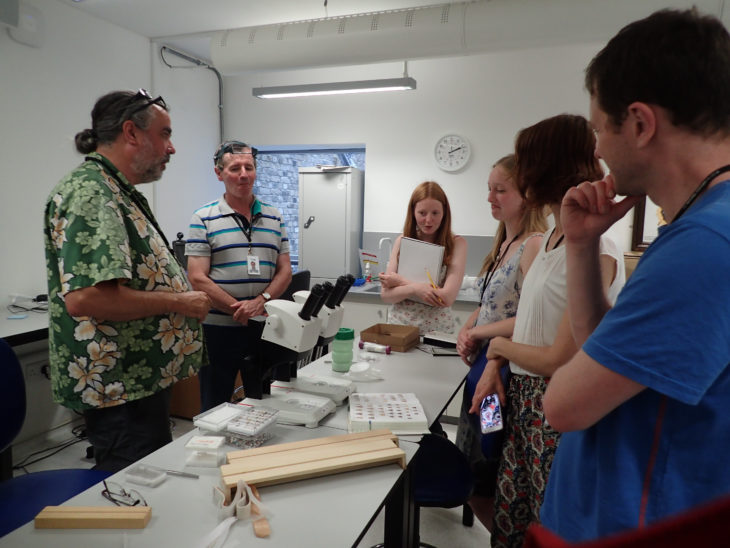For us ID Trainers it has been a hectic Month since Krisztina’s last blog. We are now deep into the workshop phase and in the last month we have attended identification workshops on Plants, Diptera and Moths!
As well as these workshops we have been busy carrying out work for the Angela Marmont Centre (AMC). This involves a diverse range of tasks from carrying out research for the Natural History Museum’s citizen science project the ‘Big Seaweed Search’, to preparing field kit for BioBlitz events and preparing presentations on our own areas of special interest.
Plants Workshop
At the beginning of July we took part in the final part of the plant identification workshop with Dr Mark Spencer which followed on nicely from the workshop we attended in April. Spreading the plant ID course across spring and summer was fantastic because we were able to observe and practice identifying a huge array of UK plant species. For me the highlight of the course was a field trip to Crayford Marsh; an extremely diverse and beautiful site which is one of a few remaining areas of Thames grazing Marsh in London. The site plays host to a large array of breeding birds, invertebrate and plant species. I particularly enjoyed seeing the Common Mallow (Malva sylvestris) and learning how Marsh Mallow (Althaea officinalis) was originally used in the making of my favourite campfire treat marshmallows, hence their name!
It was a pleasure to be taught by Mark who is not only incredibly knowledgeable but also endlessly enthusiastic. The biggest success of this course is that at the beginning when asked to use complex identification keys we were all rather intimidated; now after spending time keying out Geraniums, Medicagos and Umbellifers (to name but a few of the groups we tackled), we are all considerably more confident in our plant identification skills both in the field and under a microscope.
Crayford Marsh
Dr Mark Spencer demonstrating the size of Giant Hogweed (Heracleum mantegazzianum)
Diptera Workshop
We were lucky enough to have the whole Diptera team teaching us throughout our five day workshop. To begin with we were given a tour of the World Diptera collections which holds between 2-3 million specimens! Here we were given an introduction into the most appropriate methods of preparing and storing different Diptera specimens; from using alcohol for certain families such as the Simuliidae (Black Flies) to pinning for families such as the Syrphidae (Hoverflies).
For me, the highlight of this workshop was our field visit to Wimbledon common. Here the experts showed us the best methods for collecting Diptera and we were let loose with sweep nets and pooters to collect Dipteran specimens to take back to the museum. On returning to the museum we were given instruction on the best ways to pin Diptera. It soon became clear that different groups have different identification features and as such require different pinning methods: some requiring top down pinning, some requiring side pinning and some which could only be identified by extracting genitalia.
For the last few days of the workshop we were lucky enough to be part of a series of courses with World experts teaching us about their specific groups from the Nematoceran to the Calyptrate and Acalyptrate flies; these workshops covered identification techniques, taxonomy and ecology, as well as providing us with valuable information on where to access identification keys and useful literature. Prior to this course I had very little knowledge on Diptera, now not only do I feel confident in collecting and storing specimens, but I also have the tools and knowledge at my disposal to have a go at identifying even some of the more challenging groups.
Behind the Scenes in the NHM Diptera Collection
Sweep netting Diptera at Wimbledon Common
Learning to pin Diptera with Dr Daniel Whitmore
Moths Workshop
I started moth trapping last year in the New Forest and have been hooked on moths ever since, as such I was particularly excited to attend the moths workshop and I was not disappointed! We kicked off the workshop with a field trip to Gilbert White’s House; a heritage Museum based in Selborne, Hampshire and of course the home of the famous natural historian Gilbert White. The grounds of the house provide a mixture of habitats from herb and vegetable gardens, to ponds and beautiful wild flower meadows. The site is also surrounded by the famous Hampshire Hangers. In addition to the house, the museum is also home to the Gilbert White Field Studies Centre which was both our base and accommodation for the trip.
Our camp outside the Gilbert White Field Studies Centre
It was in the wild flower meadow close to the surrounding woodland that we set up 4 moth traps: 2 Skinner light traps, a Robinson light trap and 1 light sheet. After setting up the moth traps we spent the early evening learning about bats and carrying out a bat walk with our mentor and bat expert Steph West. It was a very exciting evening between listening out for the bat detectors and running off to the light sheet to check for moths. On the light sheet we observed some beautiful species including the Rosy Footman (Miltochrista miniata) and the Mother of Pearl (Pleuroptya ruralis). We had a very early start the next morning to check our skinner traps and identify the moths and it was definitely worth it; my favourite species of the morning included the Black Arches (Lymantria monacha) and the Ruby Tiger (Phragmatobia fuliginosa). Those of us who got up even earlier also got to see bats returning to their roost in the Field Studies Centre, although Steph had got up at 3am to do this so it was a little over enthusiastic for some of us.
Checking the light sheet
Checking the traps in the morning
On returning to the museum we were given tuition on how to pin both micro and macro moths; I found this to be me the most complex pinning we have learnt so far due to the delicate nature of Lepidoptera wings and the potential for losing scales. That being said I am keen to improve my technique and have enlisted my very handy partner to make me my own Lepidoptera setting boards! We also received tuition and practiced identification of some of the more tricky groups including the Noctuids and pugs. Our final session covered how to carry out genitalia dissection for species such as the Rustic (Hoplodrina blanda) and Uncertain (Hoplodrina alsines) which are too difficult to distinguish by pattern or colouration alone. I already had a passion for moths but this workshop has certainly enhanced it and I can’t wait to run my next moth trap!
Black Arches (Lymantria monacha)
Learning to pin Lepidoptera specimens
We all feel truly privileged to have had the opportunity to take part in these workshops and have learnt an incredible amount; it is safe to say we will all be saddened to reach the end of the workshop phase in August. That being said we are all incredibly excited to take part in our final workshop on Hymenoptera and then to move on to our individual curation placements. I am lucky enough to be working with the Lepidoptera curation team on Noctuid Moths for the 3 months of this phase, whilst my fellow ID Trainers are off to study Lichens, Slime moulds, Bees and Ichneumon Wasps. I can’t wait to get started and to hear all about what my colleagues get up to!
Written By Nicola Lowndes
Photos By Jaswinder Boparai & Steph West

